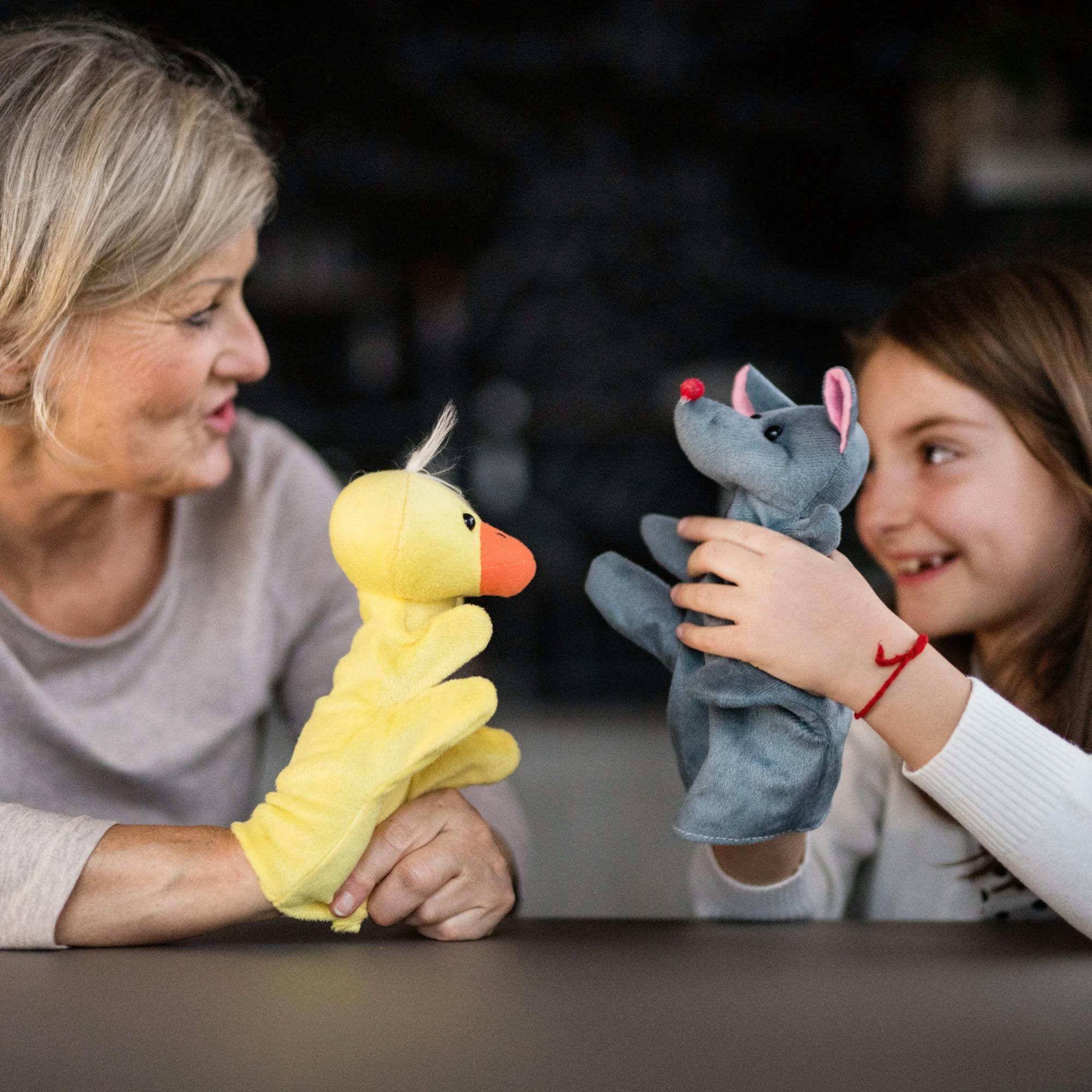When it comes to working on speech and language, there’s no one better for your child to practice with than you! That’s because practicing during natural, everyday moments is a surefire way for your kiddo to improve their communication skills. So you don’t need to set aside special time or use fancy materials to help your child with their speech. You can sneak in practice during your usual routines, like running errands together.
Here’s how to help your child with a variety of speech and language skills while crossing errands off your to-do list. Win-win!
For kids working on expressive or receptive language
You can easily help your child work on their expressive language skills while you’re shopping. For one, try labeling items you see at the store. How many types of food, clothes, or household items can you and your child name?
You can also practice using longer phrases to talk about what you see. Focus on adding descriptive words, such as the “sweet strawberries” or the “crunchy pretzels.” If your child is working on sentence structure or grammar, work on concepts such as plurals (bananas, apples) or using the correct verb tense (“We are going to the store” or “We finished shopping”).
To work on receptive language skills, or how well a child understands language, you can try giving them directions to follow. You might say, “Go get your shoes,” or try a multi-step direction like “Get your shoes, grab your water bottle, and wait for me by the door.”
If your child needs help with the directions, you can use a gesture, such as pointing to their shoes. Or you can repeat the directions a few times. Meet your child where they are and support them as needed so they can complete their tasks correctly.
Another way to work on language involves retelling what you’ve done together. Being able to clearly tell a story in an organized way is an important part of language development as kids get older.
When you’re done with errands, you can ask questions like, “Can you tell me what we did today?” or “Tell me where we went today.” You can also have your child talk about the errands with another family member.


For kids working on speech sounds
If your child sits in the grocery cart facing you, this is a perfect time to practice speech sounds. They have a great view of your mouth, which means they can watch as you pronounce words. So find some ways to practice their target sounds together. This might involve finding items in the store that feature that sound. You can practice the /p/ sound by talking about pancakes or purple grapes, or the /k/ sound by talking about cookies.
If your child is too old to sit in the cart, you can still practice speech sounds at the supermarket. Pick a number of words to practice together–maybe 10 or 15–and find some ways to sneak in the practice while you’re shopping. “I Spy” using target sounds and words is always a hit with kids! You might say, “I spy with my little eye a fruit that starts with /s/…”
If your child is practicing their speech sounds in conversation, talk with them while you shop and listen for their target sound to naturally come up. If you hear an error they don’t catch, see if they can correct it and say that sentence again.


For kids learning to manage a stutter
There are so many ways you can practice fluency skills while you and your child are running errands. Before you head out, think about the fluency techniques your child is using in speech therapy. As you and your child talk together, encourage them to use their techniques. You can use the techniques while at the store, but also while you’re in the car or on the go.
If your child is ready to use their techniques in conversation with others, look for safe opportunities where they can practice with someone else, such as a clerk or cashier. Learning to use stuttering techniques when talking to other people is a huge milestone in fluency skills.


For kids working on social communication
Social communication is a natural skill to practice when you’re out and about. Look for safe and comfortable opportunities for your child to interact with other people.
For example, maybe they can wave “hello” to the store greeter when you walk in, or have a short conversation with the cashier. Some kids may need to practice how to have a back-and-forth conversation. You can prompt your child with questions they can ask the cashier, such as, “How are you?” or “How’s your day been?”
If your child is old enough, you can have them practice asking a store employee where something is located. Simple but functional tasks like these are amazing ways to help your child gain new communication abilities.


Your role in helping your child practice speech at home
When kids are working on their communication skills, it can’t be overstated how important daily practice is. Kids learn best from people they’re comfortable with and see every day. So who better to practice with than you? The more you work on these skills together, the faster your child will make progress!
However, it’s important to notice when your child needs a break. In many cases, just 5 to 15 minutes of practice is enough. But if your child is getting frustrated, be sensitive to that, and let them pause. You can try practice another time.
Remember to give your child lots of encouragement and praise. Let them know you see how hard they’re working. We want speech practice to be positive, not stressful. So most importantly, have fun together! The learning will come naturally when the two of you are enjoying the moment.
Are you concerned about your child’s speech?
Reach out to us here at Expressable. Find a speech therapist for your child, or take our easy online self-screener for some quick insight into whether your child could benefit from a speech therapy evaluation.
How Expressable Can Help
Concerned your child isn't reaching age-expected milestones? Looking for communication support from a professional? Expressable is a national online speech therapy practice serving children and adults. We treat all major areas of communication and feeding, offer flexible hours including evenings and weekends, and accept most major health insurance plans. We’re proud to have earned more than 3,000 5-star reviews from our clients (4.9/5 average).
Our therapy model is centered on parent and caregiver involvement. Research proves that empowering caregivers to participate in their loved one’s therapy leads to better outcomes. That’s why we combine live, 1-on-1 speech therapy with personalized education and home practice activities for faster progress.
Communication is more than words. It’s how we share how we feel and show who we are. We’re here to help you or your child do just that.
 Abby Barnes, M.S., CCC-SLP
Abby Barnes, M.S., CCC-SLP












